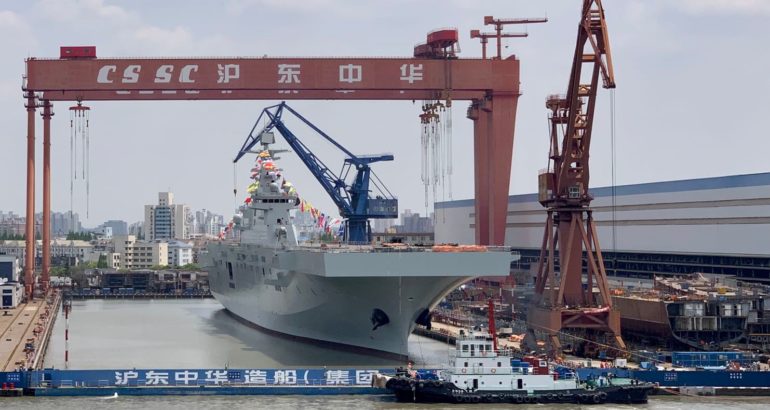Hicks: Chinese Military Expansion Poses Threats to Guam, Hawaii
by John Grady, USNI News, October 4, 2021
The United States has “real reasons for concern” over China’s expanding size and range of its military capabilities close to Japan that also pose threats to Guam and Hawaii, as well as Australia, the deputy secretary of defense said Friday.
Kathleen Hicks said President Xi Jinping’s rhetoric is making “clear their intentions” to be a global military power.
Speaking in a Center for Strategic and International Studies online forum, she said the growth of Chinese military capabilities is “the mark on the wall” for the Pentagon when it identified Beijing as a “pacing competitor.”
Hicks added that “doesn’t mean we’re doing an arms race” on a specific capability. She said the United States’ intentions, along with that of its partners and allies in the Indo-Pacific, is “to reduce tensions” and deter Beijing’s bullying and possible aggressive actions.
When asked specifically about Taiwan, Hicks said the escalating tensions across the strait is “something we watch very closely.”
Last month, China sent two dozen military aircraft into Taiwan’s air defense identification zone, the third largest incursion in the past two years.
“We have commitments to Taiwan,” under a 1970s law and to the island as a democracy, she said. Hicks said the United States and others, particularly Japan, are working to build up Taiwan’s ability “to defend themselves” against a possible invasion from the mainland. Hicks said later that she did not expect any change in Japan’s commitment to a “free and open Indo-Pacific” and security in the Western Pacific as Fumio Kishida is sworn in as prime minister. He had served as foreign minister.
In recent months, the United States has increased the frequency of its transits through the Taiwan Strait as a demonstration of its commitment to the island and peaceful resolution of tensions between Beijing and Taipei over Taiwan’s future.
Hicks stressed that Australia, with its own concerns over an expansionist China, has no interest in using the recent Australia-United Kingdom-United States, or AUKUS agreement, as a way to develop nuclear weapons.
She said the Australians see the agreement as a means to improve their submarine fleet through nuclear propulsion, which will give it greater ranger and more stealth, as China also grows its attack and ballistic missile submarine fleet.
The three nations are just beginning their 18-month consultative period that will involve the submarines, advanced computing and cyber technology and transfers.

The launch of the Type 75 big-deck amphib in Shanghai. PLAN Photo
On how the United States would be able to monitor terrorist organizations like the Islamic State and al Qaeda in Afghanistan with all its forces withdrawn, Hicks said the over-the-horizon approach was what was being done successfully in Yemen and North Africa. She added that was how the United States hunted down Osama bin Laden in Pakistan in 2011.
The department’s counterterrorism effort, especially in regards to al Qaeda, now “will bring a laser focus” on any moves al Qaeda or its affiliates make to attack United States citizens and the homeland. She said the effort in Afghanistan also includes monitoring the Taliban’s collaboration with al Qaeda or other terrorist groups.
“We have a variety of approaches” to include collecting human intelligence in Afghanistan and other places. She said intelligence is being collected from sensors, space assets and from computer networks, often used by the Islamic State and its affiliates.
Hicks said that before American forces withdrew from Afghanistan, they had either removed the most sensitive equipment or rendered it inoperable. In an answer to an audience question, she said she had not heard any reports that the Taliban had flown a Black Hawk helicopter over Kandahar when it took the capital. She added that if true, the Taliban “would have to be able to fuel and maintain” a helicopter like that for it to be useful to them.
Hicks did distinguish between equipment that was used by the American military and equipment turned over to the Afghans in the course of the war, including aircraft flown to neighboring countries before the collapse of the Afghan government in mid-August.